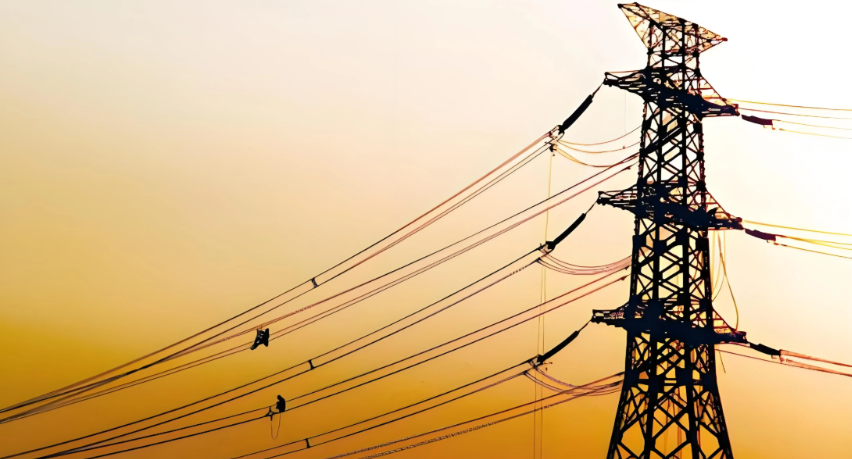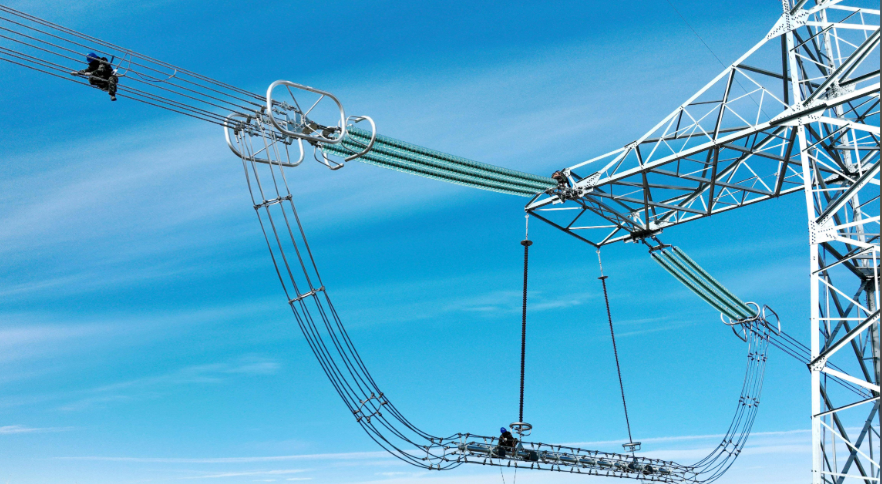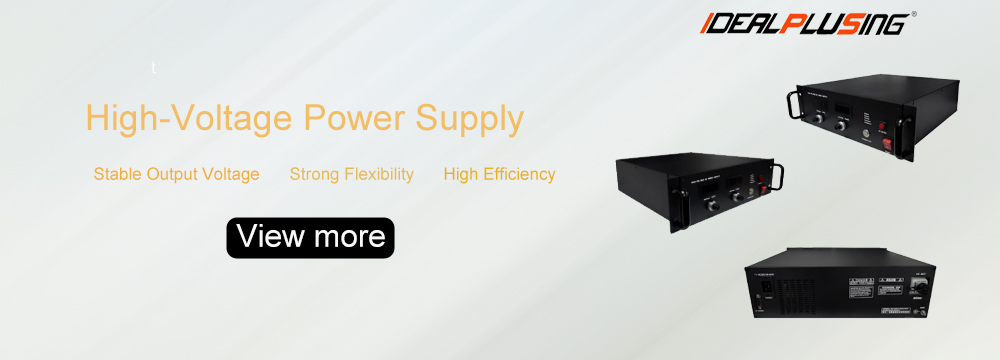The current status of the application of high-voltage power supply in the field of power transportation is mainly reflected in two aspects: high-voltage direct current transmission (HVDC) and high-voltage alternating current transmission (HVAC).
High-voltage direct current transmission (HVDC)

High-voltage direct current transmission is an efficient and reliable long-distance power transmission method. Compared with traditional AC transmission, high-voltage direct current transmission has the advantages of low line loss, large transmission capacity, and good stability. It can effectively solve the voltage drop and power loss problems in long-distance transmission and support cross-regional power allocation.
Application examples of high-voltage direct current transmission (HVDC)
1. Long-distance large-capacity power transmission
Gezhouba-Shanghai DC transmission project: This is China's first long-distance large-capacity high-voltage direct current transmission line with a voltage level of ±500kV, a capacity of 1200MW, and a transmission distance of 1064 kilometers. The project realizes the DC interconnection of regional power grids and opens the era of AC and DC hybrid transmission in China.
Three Gorges-Changzhou DC Transmission Project: The project runs from the left bank of the Three Gorges to Changzhou, Jiangsu, with a voltage level of ±500kV, a capacity of 3000MW, and a transmission distance of 890 kilometers. It uses high-voltage DC transmission technology to efficiently transmit the power of the Three Gorges to the East China region, meeting local electricity demand.
Three Gorges-Guangzhou DC Transmission Project: The project has a voltage level of ±500kV, a capacity of 3000MW, and a transmission distance of 962 kilometers, further optimizing the cross-regional configuration of power resources.
2. Offshore wind power grid connection
High-voltage DC transmission technology is widely used in power transmission of offshore wind farms. For example, modular multilevel converter (MMC) technology is used in 320kV, 200MW high-voltage DC transmission systems to transmit power from offshore wind farms to land power grids through submarine cables. This technology can effectively reduce transmission losses and improve transmission efficiency.
3. Upgrading urban power grids and access to distributed energy
In urban power grids, flexible high-voltage direct current transmission technology (VSC-HVDC) is used to upgrade power grid systems and access distributed energy (such as solar energy and wind energy). For example, some cities use flexible HVDC technology to power data centers, which are converted into direct current through the HVDC system and distributed to servers through 10 kV park incoming lines. This method not only improves power supply efficiency but also reduces energy consumption.
4. International power interconnection
High-voltage direct current transmission technology is used to connect power systems in different countries. For example, Canada has built a three-terminal direct current transmission system to achieve interconnection of power grids in different regions. This technology can improve the flexibility and reliability of the power grid and promote cross-border power transactions.
Characteristics of high-voltage direct current transmission (HVDC)
1. Low transmission loss
DC transmission lines only require two conductors (only one for single-pole), which is less than three-phase AC transmission lines, and the number of conductors is small, and the resistance heating loss is small. In addition, DC transmission does not have reactive power loss of inductive reactance and capacitive reactance, and the unit loss is reduced when the transmission power increases, with significant energy-saving effects.
2. Low line cost
The overhead line tower structure of DC transmission lines is relatively simple, and the line corridor is narrow, which saves a lot of land resources. For example, the width of the corridor of a 500kV DC line is only 40 meters, which saves a lot of land compared to AC lines.
3. High grid stability
DC transmission is not limited by the transmission distance, and there is no reactive angle stability problem in AC transmission. In the event of a fault, the DC transmission system can improve the stability and reliability of the grid by quickly adjusting the power and realizing the flow reversal.
4. Flexible power control
The DC transmission system can quickly and accurately control the level and transmission direction of electric energy. Through the voltage source converter (VSC) or modular multilevel converter (MMC), independent control of active and reactive power can be achieved, improving the flexibility of the grid.
5. Suitable for new energy access
High-voltage DC transmission technology can effectively integrate renewable energy far away from consumers, such as offshore wind power and solar power. It solves the stability problem of new energy access by reducing harmonics and improving transmission efficiency.
6. Limit short-circuit current
The DC transmission system will not increase the short-circuit capacity of the system, avoiding the problem of excessive short-circuit current caused by the increase in system capacity. This reduces the additional investment caused by replacing equipment.
With its unique advantages, high-voltage direct current transmission (HVDC) technology is becoming an important choice for modern power transmission, especially in the fields of long-distance transmission, new energy access and grid interconnection. It shows great application potential.
High-voltage alternating current transmission (HVAC) 
High-voltage alternating current transmission is another important mode of power transportation. Ultra-high voltage alternating current transmission has the comprehensive advantages of long distance, large capacity, low loss and small land occupation, and is an ideal choice for long-distance cross-regional large-capacity transmission.
Examples of the application of high-voltage direct current transmission (HVDC) internationally
1. North Sea Link in Europe
Background: HVDC transmission line connecting the UK and Norway, used to integrate North Sea wind power resources.
Technical parameters: The total length of the line is about 720 kilometers, the voltage level is ±500kV, and the transmission capacity is 1400MW.
Significance: Through this line, Norway's hydropower resources can complement the UK's wind power resources, optimize energy allocation, and reduce carbon emissions.
2. England–France Interconnector
Background: HVDC transmission line connecting the UK and France.
Technical parameters: Transmission capacity is 2000MW.
Significance: This line allows power exchange between the two countries' power grids, enhancing energy security and market efficiency.
UK–Netherlands Interconnector
Background: HVDC transmission line connecting the UK and the Netherlands.
Technical parameters: Transmission capacity is 1000MW.
Significance: It promotes power trade between the two countries and optimizes the use of energy resources.
3. Norway–UK HVDC Interconnector
Background: HVDC interconnection line between Norway and the UK.
Technical parameters: Transmission capacity is 1400MW and voltage level is ±500kV.
Significance: This line promotes the exchange of hydropower and wind power resources between the two countries and improves energy utilization efficiency.
Power supply for UAE offshore platforms (Project Lightning)
Background: Providing power for UAE offshore oil platforms.
Technical parameters: Using HVDC Light® technology, the transmission capacity is 3200MW, and the voltage levels are ±320kV and ±400kV.
Significance: By supplying power from land to offshore platforms, the carbon emissions of offshore platforms are reduced and the reliability of energy supply is improved.
Application characteristics of high-voltage direct current (HVDC) in the world
1. High efficiency of long-distance transmission
HVDC systems have low losses during long-distance transmission, with losses of only 2-3% per 1,000 kilometers, which is significantly better than the 6-7% loss of AC transmission.
Suitable for long-distance transmission, such as cross-border or intercontinental transmission.
2. Strong grid interconnection capability
HVDC can connect grids of different frequencies or phases to achieve interconnection of asynchronous grids.
For example, Europe's HVDC interconnection lines have promoted cross-border energy trade and enhanced the reliability and flexibility of the grid.
Strong renewable energy integration capability
HVDC systems can efficiently transmit renewable energy (such as offshore wind power and solar power) far from consumption centers to the power grid.
For example, the North Sea Connector integrates offshore wind power into the power grids of the United Kingdom and Norway.
Enhancing grid stability and flexibility
HVDC systems can precisely control the flow of power, suppress grid oscillations, and reduce the risk of cascading failures.
When the power grid is disturbed, the HVDC system can isolate the affected area and maintain stable operation in other areas.
3. Less infrastructure requirements
HVDC transmission lines require fewer conductors and narrow corridor widths, reducing land use and construction costs.
For example, the corridor width of HVDC lines is usually narrower than that of AC lines, reducing land occupation.
4. Environmentally friendly
HVDC lines generate lower electromagnetic fields (EMF), reducing the impact on health and the environment.
By optimizing the integration of renewable energy, HVDC systems help reduce greenhouse gas emissions.
In general, the transmission power is higher, the transmission distance is longer, and the unit capacity line occupies less land.
These advantages make UHV power transmission have significant economic and environmental benefits in long-distance, large-capacity power transmission, and can effectively solve the problem of uneven geographical distribution of power resources and promote the construction of energy Internet.
China has strong technical strength in the field of UHV power transmission and has also won many large orders internationally, providing power equality for the world.
Share our interesting knowledge and stories on social media














